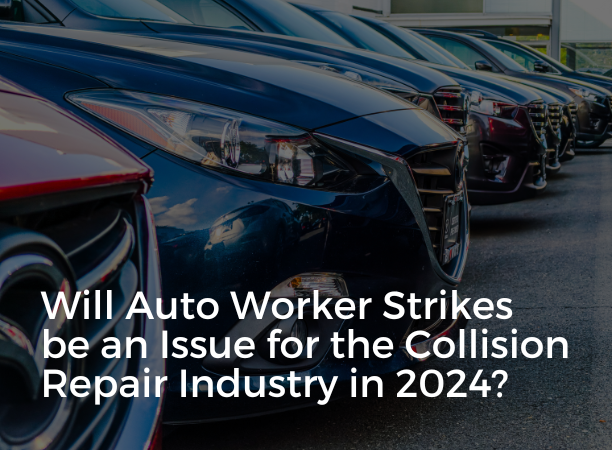Will Auto Worker Strikes be an Issue for the Collision Repair Industry in 2024?

As we enter 2024, it’s time to take stock of the past year and look at trends to watch for this year.
2023 was issue-filled for the auto collision repair industry. Initially, the OE and aftermarket parts supply was disrupted due to the International Longshore Workers strike. After that was settled, the United Auto Workers strike against the Big 3 wreaked havoc on collision repair for domestic automakers.
Will unions still impact collision repair in 2024?
As soon as the UAW strike against the Big 3 was settled, UAW President, Sean Fain made no secret of his next targets: Toyota and Tesla.
Toyota’s U.S. assembly plants are all in “Right to Work” states, making union organizing more challenging. However, fresh off a victory against the Big 3, Fain may believe he has the power to win here as well. In 2023, public sympathy overwhelmingly favored the UAW, making this a situation to watch in 2024.
Tesla may present an even more obvious target.
With its assembly plant in Fremont, CA (California not being a “Right to Work” state), and their current European strike issues, Tesla may look like an ideal strike candidate for the UAW.
What began as a Swedish strike of fewer than 100 Tesla workers has now grown into the most serious effort that Tesla had to deal with to date. Several other unions in the country have joined forces to disrupt Tesla’s operations, putting additional pressure on the company. Port workers, electricians and cleaning services that deal with Tesla in Sweden have refused to work with the company since the service workers announced the strike.
Elon Musk reportedly told Tesla Sweden that they are not allowed to sign any collective agreement with a union. This zealous approach has stalled negotiations and encouraged more unions to take action against Tesla, even outside of Sweden.
Anti-Musk sentiment is at an all-time high, so unions doing business with Tesla in the U.S. could be convinced to take similar action to what has happened in Europe.
What makes Tesla particularly vulnerable is somewhat of their own doing. They have a weak collision supply chain even when fully functional; no aftermarket parts are being made and Tesla tightly controls parts harvesting of total losses.
As we saw from the UAW action against the big three, they understand parts supply is an important target, with the strike ending very soon after parts supply was disrupted.
Tesla and Toyota present two very different targets – but each may be seen by the UAW as a potential target in 2024.
The U.S. is Tesla’s biggest market, and although Tesla does not break out sales figures by region, it’s estimated there are over 1.8 million Tesla’s in the U.S., which is small compared to Toyota’s massive fleet. But Toyota has a robust parts network, along with large salvage and aftermarket supply.
What can we expect in 2024?
So, does Tesla’s unique (but significantly smaller) place in the market make them a more attractive target than Toyota for the UAW?
We shall see, but either way it looks like strikes may again be something for the collision repair industry to keep an eye on 2024.
